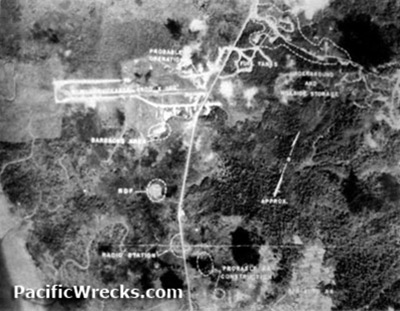|
|
|
|
| Missing In Action (MIA) | Prisoners Of War (POW) | Unexploded Ordnance (UXO) |
| Chronology | Locations | Aircraft | Ships | Submit Info | How You Can Help | Donate |
|
 IJN January 1942  5th AF November 26, 1944  Australian Army May 1, 1945  Australian Army May 19, 1945 |
Location Lat 3° 17' 60N Long 117° 37' 60E Tarakan (Tarakan Town) is located at an elevation of 9' / 2m above sea level on the southern portion of Tarakan Island off the northeast coast of Borneo. To the northwest is Tarakan Airfield. Prewar and during the Pacific War, part of the Netherlands East Indies (NEI). Today located in North Kalimantan Province (Kalimantan Utara) in Indonesia. In Indonesian known as Kota Tarakan (Tarakan City). Prewar The Tarakan area was developed by the Dutch into the oil producing center of the Netherlands East Indies (NEI). Starting in 1902, the Dutch began drilling oil wells in the Tarakan area with 800 wells in operation by the start of the Pacific War. Starting in 1915, the Imperial Japanese Navy (IJN) began importing oil from Tarakan when the fleet switched from coal to oil. Wartime History On January 11, 1942 in the early morning hours a Japanese invasion force approaches the east coast of Tarakan Island. At 5:00am the Japanese invasion force "Sakaguchi Detachment" under the command of Maj. Gen. Shizuo Sakaguch began landing on the east coast of Tarakan Island. The force included the "Right Wing Unit" under the command of Col. Kyōhei Yamamoto including 2nd Kure Special Naval Landing Force (SNLF) that landed to the north of the Amal River at the center of the island. The "Left Wing Unit" under the command Commander Col. Ken’ichi Kanauji plus supporting units landed at the southern tip of the island. The objective of the Japanese landing was to seize oil drilling facilities and refineries on the island. Afterwards, Tarakan was occupied by the Japanese until May 1, 1945. Starting in the middle of November 1944, Allied bombers and fighters began targeting shipping and targets on Tarakan Island ahead of the Allied landing. American missions against Tarakan January 7, 1942–June 12, 1945 On May 1, 1945 in the morning U.S. Navy (USN) Amphibious Group Six landed the Australian Army at Tarakan. The landing was covered by a Task Group commanded by Rear Admiral Russell S Berkley with additional elements were provided by the U.S. Navy 7th Fleet, including Australian ships that provided covering fire until the landing craft were only 400 yards from the beaches while aircraft flew ground support mission until 15 minutes prior to the landing to suppress any opposition. The landings commenced at 8:15am with the Australian Army 9th Division, 26th Infantry Brigade landing the 2/23rd Battalion at "Green Beach" to the right plus 2/48th Battalion landing at "Red Beach" to the left. Afterwards, 2/24th Battalion in reserve landed at "Green Beach". Other Australian Army units involved include 2/23rd Infantry Battalion, 2/24th Infantry Battalion, 2/48th Infantry Battalion, 2/2nd Pioneer Battalion, 2/3rd Pioneer Battalion, 2/4th Commando Squadron "C" Squadron, 2/9th Armoured Regiment "D" Company 2/2nd Machine Gun Battalion, 2/7th Field Regiment, 53rd Composite Anti-Aircraft Regiment, 2/11th Field Company, 2/13th Field Company, 2nd Field Company, 110th Casualty Clearing Station and 2/11th Field Ambulance. Ashore, the Australians met very little resistance as most Japanese had withdrawn inland. On May 6, 1945 Tarakan Town was liberated. Fighting continued on Tarakan Island until August 1945 by which time neither Tarakan Airfield or oil facilities were fully operational due to damage. Tarakan Airfield (Juwata Airport) Used during the war by the Japanese, liberated by Australians, used by RAAF References Index to Air Bases - Research Report No. 85, I.G. No 9185 - July 30, 1944 Australian War Memorial (AWM) 'I didn't think it would be like this' interview with James Cronk, RAAF Contribute
Information Last Updated
|
Map January 1942 Map Fallingrain Photo Archive |
| Discussion Forum | Daily Updates | Reviews | Museums | Interviews & Oral Histories |
|